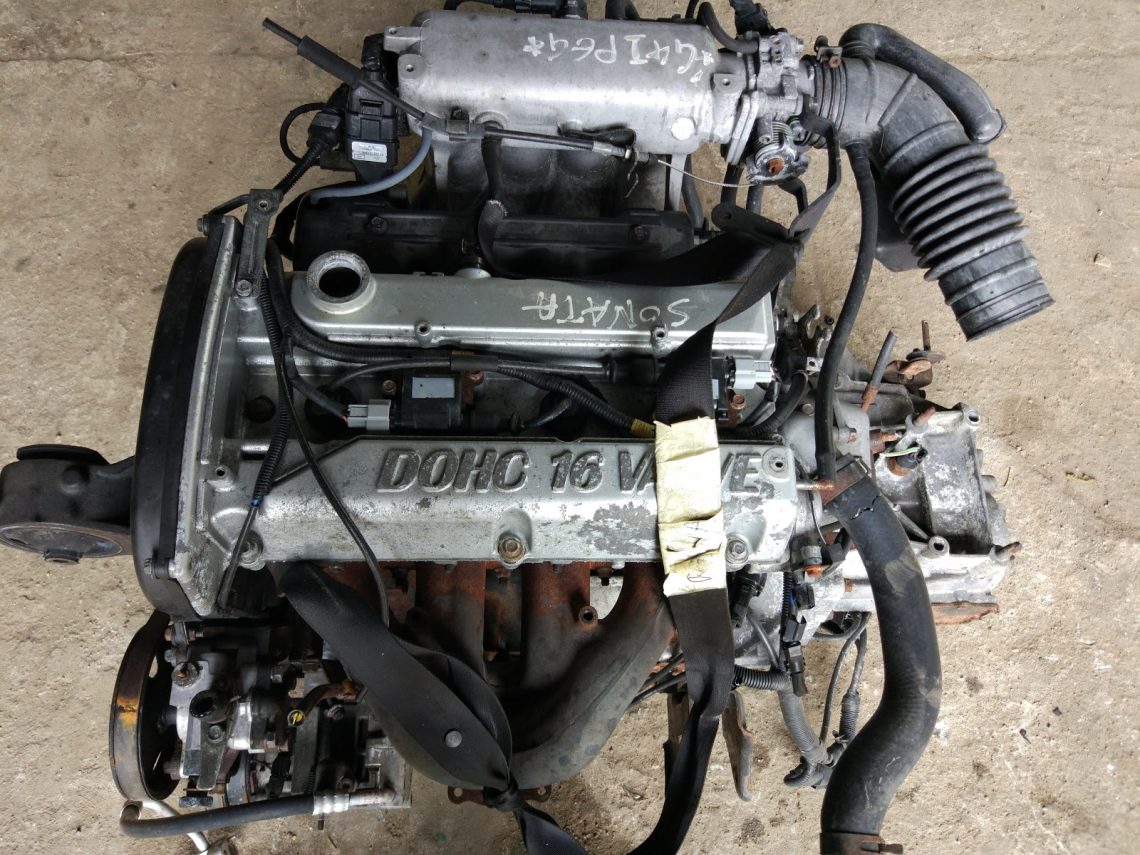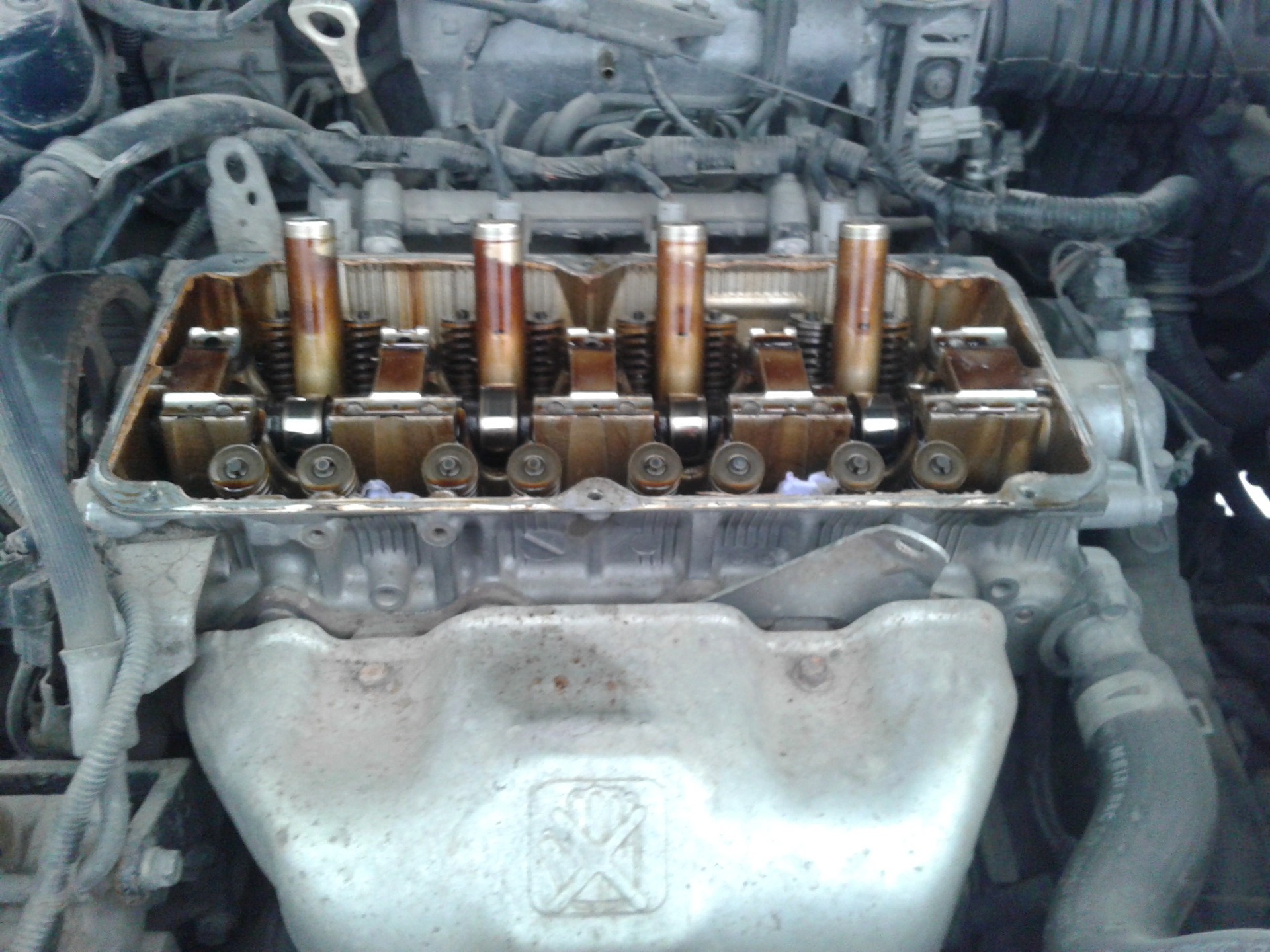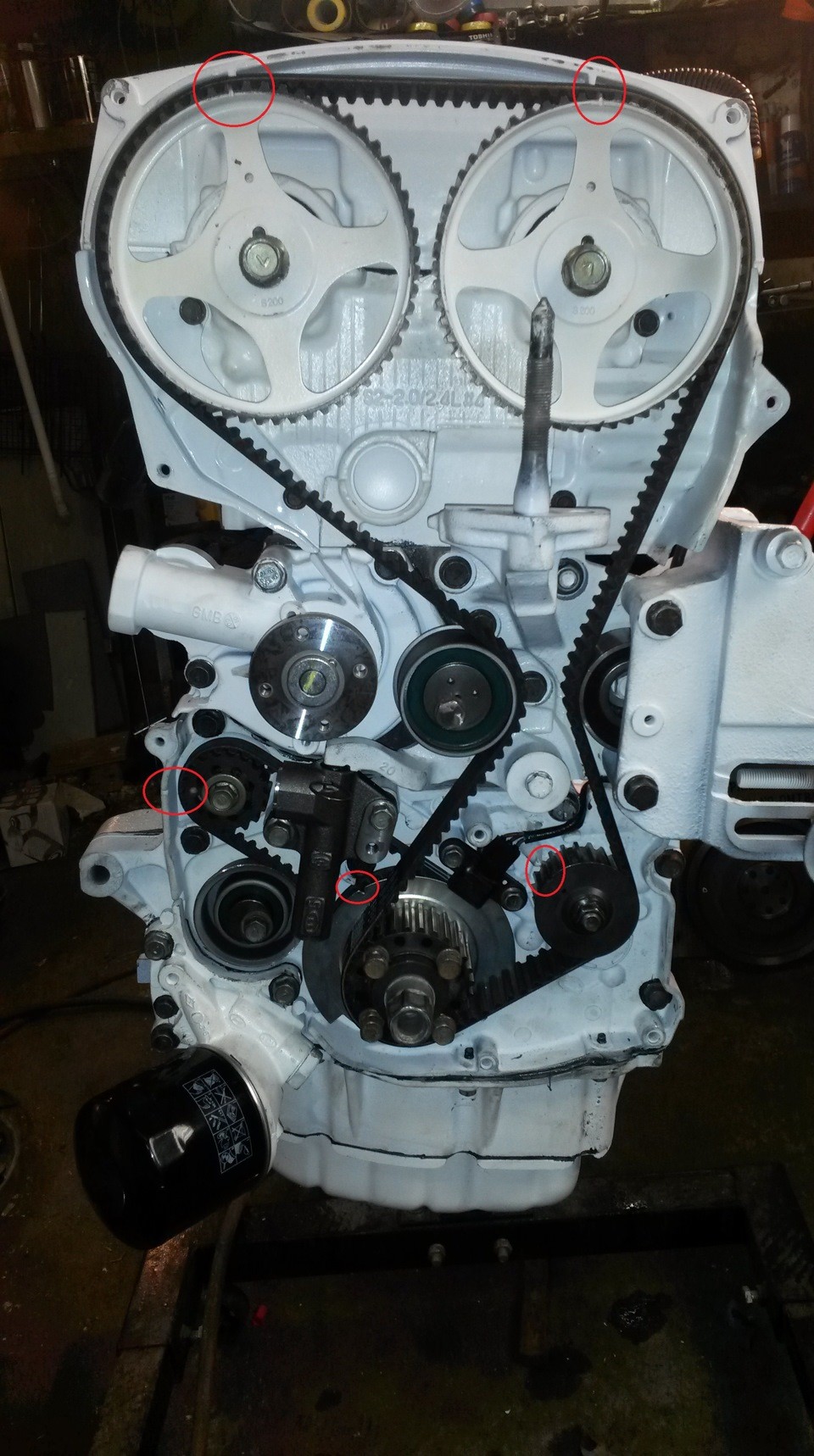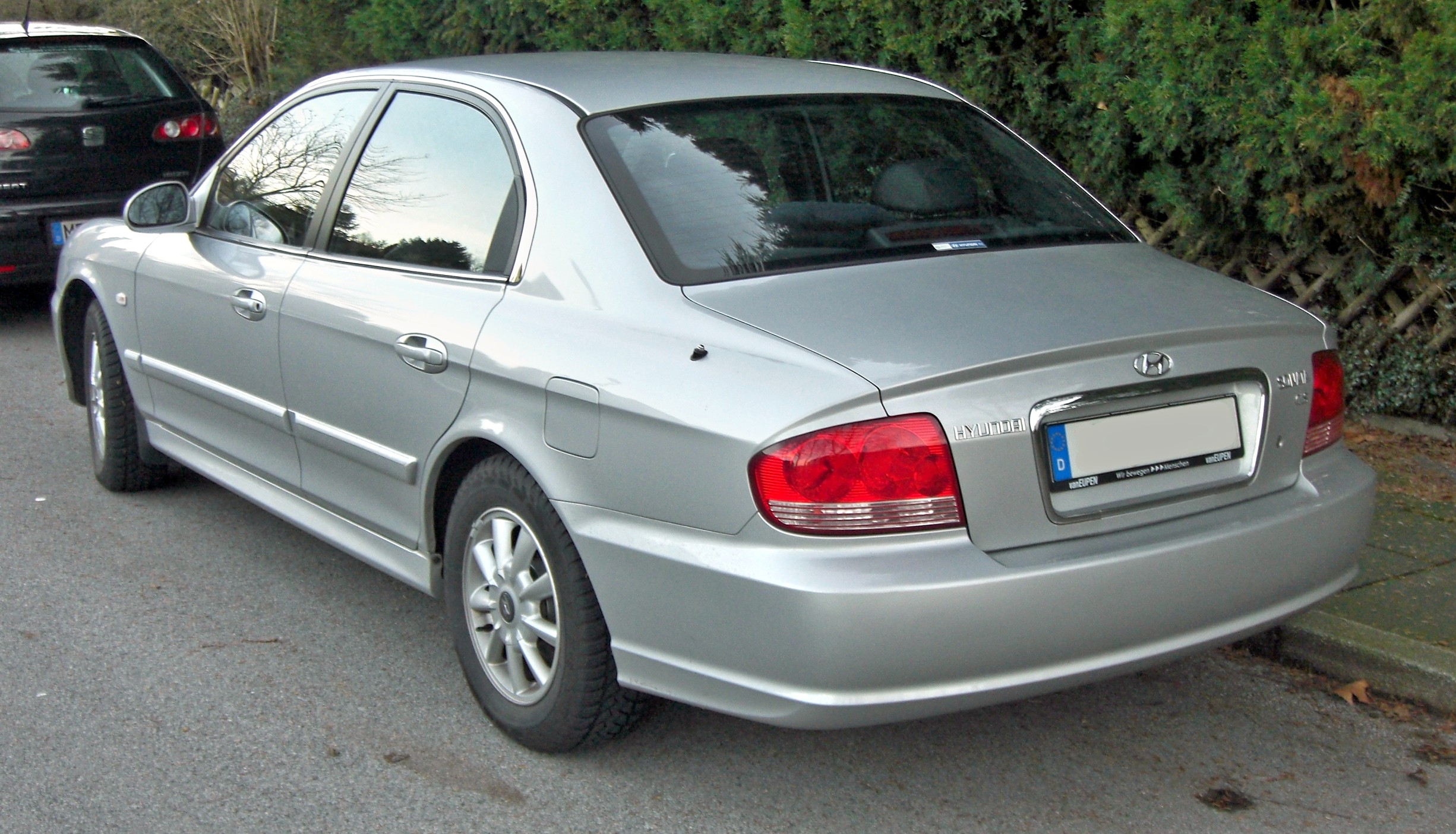
Hyundai G4JP engine
Content
This is a 2-liter engine that was produced at the Korean plant from 1998 to 2011. Structurally, it is a copy of the unit from Mitsubishi 4G63. It is also supplied to the conveyor of the TagAZ plant. G4JP is a four-stroke, two-shaft unit operating according to the DOHC scheme.
Description of the G4JP engine

The power system is an injector. The engine is equipped with a cast-iron BC and a cylinder head made of 80% aluminum. Valves do not need to be adjusted, as automatic hydraulic compensators are provided. The engine is picky about the quality of gasoline, but standard AI-92 can also be poured. The compression of the power unit is 10 to 1.
The first letter of the name indicates that the G4JP engine is adapted to run on light liquid fuel. The design of the power system is such that the internal mixing of the combustible mixture occurs as efficiently as possible. Thanks to this, injection is clearly regulated, fuel consumption is reduced. The fuel assemblies are ignited by an electric spark supplied by an ignition coil.
The Korean engine is equipped with 16 valves. This to some extent explains its unique agility and power. However, the most important advantage of this motor, of course, is efficiency. It consumes relatively little, but does not lose momentum and runs for a long time if it is serviced in a timely manner.
| Parameters | The values |
|---|---|
| Engine displacement, cc | 1997 |
| Maximum power, hp | 131 – 147 |
| Maximum torque, N * m (kg * m) at rpm. | 176(18)/4600; 177(18)/4500; 190(19)/4500; 194 (20) / 4500 |
| Fuel used | Gasoline AI-92 |
| Fuel consumption, l / 100 km | 6.8 – 14.1 |
| engine's type | Inline, 4-cylinder |
| Supply system | Distributed Injection |
| Cylinder diameter, mm | 84 |
| The piston stroke, mm | 75 |
| Number of valves per cylinder | 4 |
| Maximum power, h.p. (kW) at rpm | 131(96)/6000; 133(98)/6000; 147(108)/6000 |
| Cars on which it was installed | Hyundai Santa Fe 1st generation SM, Hyundai Sonata 4th generation EF |
| Cylinder block | cast iron R4 |
| Block head | aluminum 16v |
| Compression ratio | 10 |
| Hydraulic compensators | Yes |
| Timing drive | belt |
| What kind of oil to pour | 4.2 liters 10W-40 |
| Environmental class | EURO 2/3 |
| Approximate resource | 300 000 km |
Malfunctions
The G4JP engine has its inherent breakdowns and weaknesses.
- If the timing belt breaks, then the valves bend. This necessarily leads to a major overhaul, you need to completely sort out the motor, replace the piston group. The belt must be periodically monitored, pay attention to smudges, tension, external condition. Its resource cannot be called great.
- Even before the 100th run, hydraulic lifters may begin to click. Replacing them is a serious matter, as it is expensive.
- Strong vibrations begin after the motor mounts are loosened. If you often drive off-road and bad roads, this will happen sooner than you expect.
- The throttle valve and IAC quickly become clogged, which inevitably leads to instability in speed.

Compression drop
Characteristic "sore" of the engine. Signs appear as follows: at startup, breakdowns begin in the XX mode, the car shakes strongly, the check engin flashes on the tidy (if warmed up). In this case, it is recommended to check the compression ratio immediately, on a cold engine, since the cause of the fall may be due to worn valves.
It is extremely difficult to immediately determine the problem, because “breakdowns” on the twentieth are often similar to a symptom of bad candles that need to be changed, but you can wait. Therefore, the owners still drive like this for a long time, but when the signs of a malfunction already intensify, they carry out a cardinal diagnosis.
It is noteworthy that there are no symptoms of a problem on a hot one. The engine runs stably, only in the morning the number of "breakdowns" increases. In addition to strong vibration in the cabin, an unpleasant smell of gasoline is added. If you change the candles, the symptoms may disappear, but not for long. After 3 thousand km, everything will start anew.
It is almost impossible for a non-specialist to immediately suspect “sagging” valve seats. He will begin to change coils, wiring, measure lambda. The ignition system and nozzles will undergo a thorough inspection. The idea of low compression does not immediately come to mind, unfortunately. And it would be necessary to check, and all the cases.
Thus, it is necessary to measure the compression strictly in the morning, on a cold engine, otherwise there will be no benefit. In one of the cylinders, most likely in the 1st, it will show 0, in the rest - 12. After the engine warms up, the compression on the first pot will rise to the standard 12.
It is possible to determine a damaged valve only after removing the cylinder head. On the first cylinder, the problematic part will sag relative to other valves - bulge towards the hydraulic lifters by 1,5 mm.
Many knowledgeable experts claim that the sag of the seat of one of the valves is a “genetic” disease of Korean engines like the G4JP. Therefore, only one thing saves: the groove of a new seat, the lapping of the valves.
On the timing belt
It is strongly recommended to change it after 40-50 thousand kilometers! The manufacturer indicates 60 thousand kilometers, but this is not so. After the belt breaks, it can turn the entire cylinder head, split the pistons. In a word, a broken belt kills the motors of the Sirius family.
For correct marking during the installation of a new timing belt, the native Hyundai tensioner roller with a hole in the middle is not suitable. It is better to use the Mitsubishi eccentric. The marks are clearly visible in the photo below.

Basic Rules.
- When setting marks, it is forbidden to turn the camshafts, as it is possible to bend the valves with careless movement.
- The mark of the front balancer can be considered correctly installed if a control rod enters the test hole - a wire, a nail, a screwdriver. 4 centimeters should go in.
- You have to be extremely careful with the crankshaft butterfly, it cannot be bent, otherwise it will break the shaft position sensor.
- Having installed the timing belt, it is necessary to scroll the engine with a key so that the plate passes exactly in the center of the DPKV slot, it does not cling to anything.
- When using a Mitsubishi eccentric roller, it is recommended to preload the belt more than less. You can loosen it later, but it is extremely difficult to tighten it exactly.
- You can not turn the engine without a belt on!
If the marks are set incorrectly, then this threatens not only with a broken belt, but also with an increase in fuel consumption, speed drops and unstable idling.
Cars on which it was installed
G4JP, due to its versatility, was installed on several Hyundai / Kia models. However, it was most widely used in Sonata cars of the 4th and 5th generations. Even in Russia, the production of this car model with this 2-liter engine under the hood was launched.

G4JP was also installed on Santa Fe in the back of SM, Kia Carens and other models.
Video: G4JP engine
| Vladimir 1988 | Dear, tell me, sonata 2004, engine G4JP, mileage 168 thousand km. I plan to travel for another two years. Is special care needed, and what is the resource of this engine? |
| Ruth | Vladimir, what are you talking about? The resource is a phantasmagoria, I saw a diesel engine on benches and geldings, which are a la millionaires, already at 400 thousand run into such rubbish that when disassembling the engine, people simply grabbed their heads (experienced masters). So this is a rhetorical question rather, and if so, I’ll say my (purely rhetorical) opinion, if you don’t turn (any engine) and tear like crazy, at least 300 thousand will live without a capital (even a Zhiguli is capable of this (I saw it myself) my motor has already run somewhere far beyond 200 (2002) So drive for 2 years, just change the timing belt and watch it carefully (on our engines it’s just a disaster with it) and it (the car) will repay you with the same .. |
| Serge89 | I completely agree. The resource of any engine depends on many factors - oil quality and replacement frequency, as well as gasoline, driving style, starts (warming up) in winter, how we load a car, etc. and so on. so, as you follow the engine and the car as a whole, you will ride for so long without knowing any problems.! |
| Volodya | I use 5w40 mobile oil. I change every 8 thousand, I don’t tear more than 3 thousand revolutions, I haven’t changed the belt yet, but as far as I know, every 50 thousand |
| Picture | I would advise you to remove the upper casing and visually assess the condition of the belt and its tension |
| barik | In order for the internal combustion engine to last longer, the most important thing is high-quality oil and change it on time. And I don’t agree about “turning” the engine, because. any internal combustion engine has a kind of memory, if you don’t turn it at least sometimes, it can become trophied (kind of like muscles), so I personally need to twist it, but without fanaticism |
| Rafasik | here in the tundra we have 2-liter Sonya in a taxi, runs already 400 thousand - WITHOUT CAPITAL !!! without zhora oil! car care and will serve for a long time! |
| KLS | The work of the internal combustion engine is a series of successive explosions, the higher the speed, the more explosions, therefore, on the one hand, the intensity of friction is higher, on the other hand, there is more detonation caused by explosions. In one phrase - the higher the speed - the higher the load, the higher the load - the higher the wear. |
| Sea | Kia Magentis, 2005 (left hand drive); Engine G4JP, gasoline, Omsk, temperature range from -45 to +45; City 90% / Highway 10%, plain; Replacement of 7-8 thousand km, and during the transition from season to season; There is no particulate filter, Euro 5 does not comply. Oil is available for everything that is not brought by Autodoc, Exist or Emex. The manual says: API Service SL or SM, ILSAC GF-3 or higher. The car departed about 200 thousand km. but perhaps more, they are such cunning outbidders. oil eats 4 liters per 8000 km, I know that it is necessary to change the caps and rings, but for now we will postpone it for the summer. I pour Shell Ultra 5W40, but due to recent changes in currency prices, the price of oil has risen by 100% and I want to switch to something budgetary so that topping up is not so expensive. advise oil from the budget segment, but with good characteristics, both for the summer in the heat and for the winter in the cold |
| Left | BESF1TS this is the kind of oil that someone met, it seems like the same as the original hyundai / kia, but only without overpaying for the brand |
| Slevgeny | I have the same car with the same engine. On the run 206 t.km. it was decided to make the capital of the engine, because. oil consumption for a run of 7-8 t.km. was about 3-4 liters. After kapitalki consumption for mileage 7-8 t.km. (I always change the oil in this interval) is not visible to the eye on the dipstick. After the capital, I began to fill in Lukoil api sn 5-40 synthetics (or similar Uzavtoil api sn 5-40 synthetics), as I said above, there is no oil consumption with it. On the bow has already passed 22-24 t.km., changed the oil 3 times and everything is OK. |
| Even though | Hello. I have 3 tips: 1 Sell the car (since such a zhor engine is in a sad state). 2 Do not engage in nonsense with oil, but capitalize the engine (that only changing rings and caps is not a fact, sometimes a contract engine is cheaper than repair). 3 Just to go to the capital or sale in the summer 10w-40, in the winter 5w-40 (from the budget lines of Lukoil, TNK, Rosneft, Gazpromneft.) |

